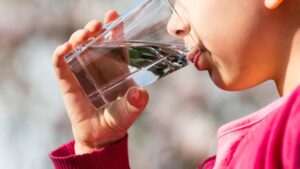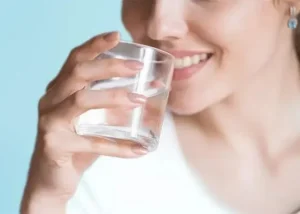Imagine turning on your tap for a glass of water, only to realize what you're drinking could contain traces of medication. Yes, you heard it right – medication in tap water is not just a plot from a dystopian novel; it's a real issue that's been popping up in discussions about our drinking water supplies.
In this article, we'll explore how drugs and medication find their way into our drinking water, the risks they pose, and what solutions exist to mitigate this problem. Stay with us to uncover the answers to pressing questions, including “does boiling water remove medication?”, and how we can ensure the water in our homes remains safe.
Understanding the Presence of Medication in Tap Water
In the quiet hum of your home, veiled beneath the apparent purity and simplicity of the water flowing from your tap, lurks a less visible, though equally significant concern: the presence of medication in tap water.
 Rapid advancements in analytical chemistry have pulled back this invisible veil, revealing that our water is not just H2O, but a complex cocktail that, on occasion, includes traces of pharmaceuticals. These pharmaceutical residues stem from a variety of sources, notably including the discharge from wastewater treatment plants, runoff from agricultural land where livestock medications are used, and improper disposal of unused medications by consumers.
Rapid advancements in analytical chemistry have pulled back this invisible veil, revealing that our water is not just H2O, but a complex cocktail that, on occasion, includes traces of pharmaceuticals. These pharmaceutical residues stem from a variety of sources, notably including the discharge from wastewater treatment plants, runoff from agricultural land where livestock medications are used, and improper disposal of unused medications by consumers.
Though the concentrations are typically minuscule, the ubiquity of these contaminants is undeniable and raises pivotal questions about the implications for public health and the environment. Understanding this issue's breadth is the first step toward grasping its potential impact and navigating the waters of an increasingly pharmacologically active world.
How Drugs and Medication Pollute Our Drinking Water
The pathway of drugs and medication into our water system is a multifaceted issue rooted in modern society's pharmaceutical consumption.
When patients consume medication, not all of it is metabolized by the body; a significant portion is excreted and ends up in wastewater. However, conventional wastewater treatment plants aren’t designed to fully eliminate these compounds, allowing them to seep into rivers, lakes, and possibly back into our drinking water supply.
Additionally, the habit of flushing unused or expired medication down the toilet contributes directly to this pollution.
Besides human consumption, veterinary drugs used in agriculture can run off into nearby water bodies during heavy rains. One of the most concerning aspects is that this contamination is not restricted to one class of medication, encompassing everything from antibiotics and painkillers to hormones and antidepressants, each with potentially distinct effects on ecosystems and human health.
Does Boiling Water Remove Medications? Debunking Myths
One common misconception is that boiling tap water can remove any medication residues it contains. While boiling water is effective against pathogens like bacteria and viruses, it falls short in dealing with complex chemical compounds found in medications.
 These substances possess properties that allow them to withstand high temperatures, meaning they remain in the water even after it is boiled. In some cases, the process of boiling may reduce the water volume but concentrate the remaining contaminants, inadvertently increasing their potency in the water that is consumed.
These substances possess properties that allow them to withstand high temperatures, meaning they remain in the water even after it is boiled. In some cases, the process of boiling may reduce the water volume but concentrate the remaining contaminants, inadvertently increasing their potency in the water that is consumed.
This highlights the importance of understanding the limitations of traditional water purification methods in dealing with modern contaminants and underscores the need for specialized filtration systems equipped to tackle pharmaceutical residues.
Medication in Our Water Supply: Assessing the Impact
The impact of medication in our water supply is an area of growing concern and active research.
Environmental scientists warn that chronic exposure to a cocktail of pharmaceuticals, even at low levels, could have long-term ecological impacts. Aquatic species, for example, are particularly sensitive, with studies revealing altered behavior and physical development among fish populations exposed to antidepressants and hormones.
The implications for human health, although not fully understood, are potentially significant, raising questions about the role of these contaminants in antibiotic resistance, hormonal disruption, and other health issues. As we strive to understand the full spectrum of risks, the presence of medication in our water supply constitutes a pressing call to review and enhance our water treatment infrastructures and pollution prevention strategies.
Safeguarding Our Water: Effective Removal and Prevention Techniques
Navigating towards solutions requires a multifaceted approach to effectively mitigate the presence of medications in drinking water.
 On the forefront are advanced water treatment technologies such as reverse osmosis, advanced oxidation processes, and activated charcoal filtration, which have shown promise in removing a wide range of pharmaceutical residues from water. Implementing these technologies at water treatment facilities can significantly reduce the level of contaminants entering our taps.
On the forefront are advanced water treatment technologies such as reverse osmosis, advanced oxidation processes, and activated charcoal filtration, which have shown promise in removing a wide range of pharmaceutical residues from water. Implementing these technologies at water treatment facilities can significantly reduce the level of contaminants entering our taps.
On the prevention side, public education on proper medication disposal and the establishment of take-back programs that allow consumers to return unused drugs can reduce the volume of pharmaceuticals entering the waste stream.
Furthermore, encouraging the pharmaceutical industry to develop eco-friendly drugs that break down more readily in the environment could present a long-term solution to this pervasive issue. Together, these strategies represent vital steps towards safeguarding our water from pharmaceutical contamination and ensuring the health and well-being of communities and ecosystems alike.
